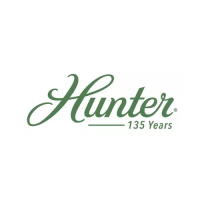Hunter e36 • Glossary
15.3
Dead run: running with the wind blowing exactly aft, in
line with the center-line.
Deviation: the difference between the direction indicat-
ed by the compass needle and the magnetic meridian;
caused by object aboard.
Displacement: 1, the weight of water displaced by a
boat is equal to the weight of the boat; 2, a displace-
ment hull is one that displaces its own weight in water
and is only supported by buoyancy, as opposed to a
planning hull which can exceed its hull, or displacement,
speed.
Downhaul: a rope fitted to pull down a sail or spar.
Draft: the vertical distance from the waterline to the low-
est point of the keel.
Drag: 1, an anchor drags when it fails to hole; 2, the
force of wind on the sails, or water on the hull, which
impedes the boat’s progress.
Drift: 1, to float with the current or wind; 2, US the
speed of a current (rate UK); 3, UK: the distance a boat
is carried by a current in a given time.
Drogue: a sea anchor put over the stern of a boat or life
raft to retard drift.
Drop keel: a retractable keel which can be drawn into
the hull, when entering shallow waters and recovering
on to a trailer.
E
Eye of the wind: direction from which the true wind
blows.
F
Fair: well-faired line or surface is smoother with no
bumps, hollows or abrupt changes in directions.
Fairlead: a fitting through which a line is run to alter the
lead of the line.
Fathom: the measurement used for depths of water and
lengths or rope. 1 fathom = 6 ft. or 1.83m.
Fid: a tapered tool used for splicing heavy rope and for
sail-making, often hollow.
Fiddle: a raised border for a cabin table, chart table
etc., to prevent objects falling off when the boat heels.
Fix: the position of the vessel as plotted from two or
more position lines.
Forestay: the foremost stay, running from the masthead
to the stemhead, to which the headsail is hanked.
Freeboard: vertical distance between the waterline and
the top of the deck.
G
Genoa: a large headsail, in various sizes, which over-
laps the mainsail and is hoisted in light to fresh winds on
all points of sailing.
Gimbals: two concentric rings, pivoted at right angles,
which keeps objects horizontal despite the boat’s
motion, e. g. compass and cooker.
Go about: to turn the boat through the eye of the wind
to change tack.
Gooseneck: the fitting attaching the boom to the mast,
allowing it to move in all directions.
Goosewing: to boom-out the headsail to windward on a
run by using a whisker pole to hold the sail on the oppo-
site side to the mainsail.
Ground tackle: general term used for anchoring gear.
Guard rail: a metal rail fitted around the boat to prevent
the crew falling overboard.
Gudgeon: a rudder fitting. It is the eye into which the
pintle fits.
Guy: a steadying rope for a spar; a spinnaker guy con-
trols the fore and aft position of the spinnaker pole; the
foreguy holds the spinnaker pole forward and down.
Gybe: to change from one tack to another by turning
the stern through the wind.
H
Halyard: rope used to hoist and lower sails.
Hank: fitting used to attach the luff of a sail to a stay.
Hatch: an opening in the deck giving access to the inte-
rior.
Hawes pipe: see Navel pipe.
Head-topwind: when the bows are pointing right into
the wind.
Headfoil: a streamlined surround to a forestay, with a
groove into which a headsail luff slides.
Heads: the toilet.
Headway: the forward movement of a boat through the
water.
Heave-to: to back the jib and lash the tiller to leeward;
used in heavy weather to encourage the boat to lie qui-
etly and to reduce headway.
Heaving line: a light line suitable for throwing ashore.
Heel: to lean over to one side.
I
Isobars: lines on a weather map joining places of equal
atmospheric pressure.
J
Jackstay: a line running fore and aft, on both sides of
the boat, to which safety harnesses are clipped.
Jury: a temporary device to replace lost or damaged
gear.
K
Keel: the main backbone of the boat to which a ballast
keel is bolted or through which the centerboard passes.
Kicking strap: a line used to pull the boom down, to
keep it horizontal, particularly on a reach or run.
L
Lanyard: a short line attached to one object, such as a
knife, with which it is secured to another.

